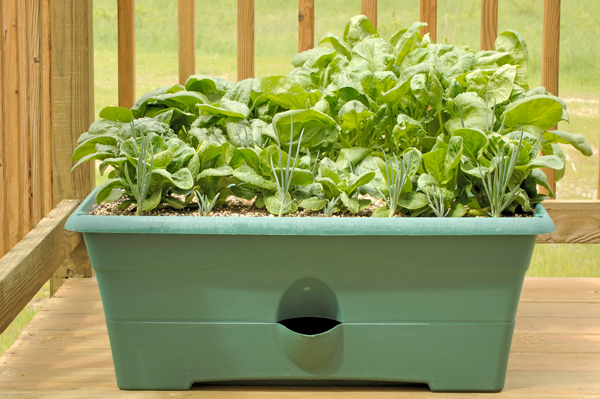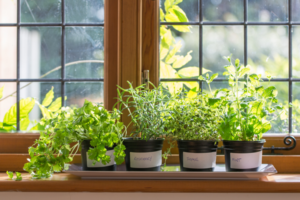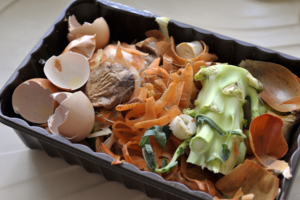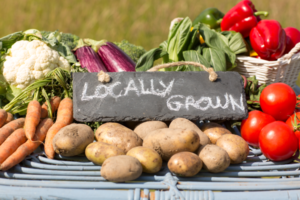Gardening Styles
Posted by Century Support Services on Apr 06, 2018

One of the best ways to help save money is to grow your own vegetables and herbs. Even if you don’t have a lot of space, you can grow enough to feed your family. If you have extra space, you could even grow enough to sell some vegetables. Additionally, growing your own vegetables is healthier and they’ll last longer since they are freshly picked instead of sitting in a warehouse or grocery store for weeks.
Patio Gardening. If you have a small space such as a patio or porch, you can still grow your own vegetables and herbs,  just grow them in small containers. Place them in a sunny window for fresh herbs all year. Grow tomatoes, green peppers, radishes, potatoes and even cucumbers in buckets on the porch or patio. Keep in mind the depth of the plant’s roots and make sure the bucket is deep enough. Big box home improvement stores often have inexpensive 5-gallon buckets. For smaller vegetables, find inexpensive containers and buckets at dollar stores.
just grow them in small containers. Place them in a sunny window for fresh herbs all year. Grow tomatoes, green peppers, radishes, potatoes and even cucumbers in buckets on the porch or patio. Keep in mind the depth of the plant’s roots and make sure the bucket is deep enough. Big box home improvement stores often have inexpensive 5-gallon buckets. For smaller vegetables, find inexpensive containers and buckets at dollar stores.
Growing Vegetables in Buckets. Choose the appropriate size buckets for your patio vegetable garden. Using a drill, make holes in the bottom of the buckets. Add 2 to 3 inches of gravel or small stones to the bottom of the bucket to help with drainage. Fill the bucket about three-quarters of the way with potting soil for vegetables. Plant vegetable seeds or starters as directed on the package.
Any containers will work as long as the roots have plenty of room. For example, you wouldn’t plant carrots in a 3-inch deep bucket as carrots need at least 8 to 12 inches to grow. Radishes may need 4 to 5 inches. Peppers need at least 16 inches for the roots to grow properly.
Growing Potatoes in Buckets. Save raw potatoes until they grow “eyes.” Cut the potatoes so that each piece has two eyes. Drill several ½-inch holes in the bottom of the bucket. Add 3 inches of gravel or small stone. Add 8 to 10 inches of soil. Place four of the potato pieces on top of the soil. Cover them with 6 to 8 inches of soil. As the plants grow, add more soil so that the bottom 2 to 3 inches of the plant is covered. Repeat as the plant grows. The potatoes in the bottom will be larger than the potatoes near the top of the bucket. Use these as baking potatoes. Use the top layer as “baby” potatoes – they’ll be ready to pick when they are no longer green and are about 1 to 2 inches in diameter.
Growing Vegetables All Year. Plant one bucket of each vegetable you want. In 30 days, plant a second bucket of each vegetable. Repeat several times so that you constantly have a month’s supply of vegetables. If you don’t eat them quick enough, increase the amount of time between plantings. If you want more, shorten the time between plantings. If you keep the vegetables on small dollies, you’ll be able to roll them inside when it gets too cold and can grow vegetables throughout the year.
Growing Herbs Inside. Fresh herbs not only add flavor to your meals, but they also add color. Plant seeds for herbs in small flower pots and keep them on a sunny windowsill. As you need the herbs, snip the bit you need. If you snip a little of each plant as you need it, the plant will continue growing. Keeping herbs inside allows you to grow them regardless of the season.
Go Larger. If you have a small backyard, you could start with a container garden. Because you’ll save money by growing your own vegetables, the next year, you may be able to plant more vegetables in a small plot in the yard. Shop around for fertilizer and know what type of soil is in your yard. You may have to add lime or other chemicals to achieve the proper pH level for a successful garden. Plant a row of each vegetable, then the next week – or in two or three-week intervals – plant another row of each of the vegetables. Be sure to leave space to add the extra rows when you first prepare your garden. You’ll have vegetables to sell and use constantly since they will be ready at different times.
If you want a raised bed, look for scrap wood at sites where people are tearing down houses – just be sure to ask if you can take the scrap. You may also find scrap wood at lumberyards. And if you have a tree that needs to be taken down, don’t throw the wood away – instead use it for borders for a raised bed.
Composting. Compost vegetable peels, scraps and ones that are going bad, eggshells fruit peelings and cuttings to use for fertilizer. You can create a small compost bin by picking up a larger plastic storage bin at a dollar store. Drill small holes in the bottom. Add grass clippings and soil from the yard – or potting soil if you are in an apartment. Add fruit and vegetable waste. Stir it with a shovel weekly. Keep the bin covered and in a sunny spot. You’ll have compost in 60 to 90 days.
fertilizer. You can create a small compost bin by picking up a larger plastic storage bin at a dollar store. Drill small holes in the bottom. Add grass clippings and soil from the yard – or potting soil if you are in an apartment. Add fruit and vegetable waste. Stir it with a shovel weekly. Keep the bin covered and in a sunny spot. You’ll have compost in 60 to 90 days.
Growing your own vegetables and herbs is inexpensive and much healthier. If  you have space, you could grow enough to sell. You may be able to cover the costs of growing your own or even make a small profit, depending on the size of garden you grow.
you have space, you could grow enough to sell. You may be able to cover the costs of growing your own or even make a small profit, depending on the size of garden you grow.